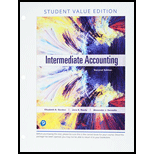
The assessment of amount of the allowance for doubtful accounts receivables.
Given information:
Data for Y2
Sales for the Y2 are $370, 00,000.
Total receivables for Y2 are $67,000,000.
In 0-30 days ageing category receivables are $15,000,000 with uncollectible 4%.
In 31-60 days ageing category receivables are $27,000,000 with uncollectible 10%.
In 61-90 days ageing category receivables are $10,000,000 with uncollectible 30%.
In 91-120 days ageing category receivables are $5,000,000 with uncollectible 40%.
In Over 120 days ageing category receivables are $10,000,000 with uncollectible 80%.
Data for Y1
Sales for the Y2 are $420, 00,000.
Total receivables for Y1 are $48,000,000.
In 0-30 days ageing category receivables are $30,000,000 with uncollectible 1%.
In 31-60 days ageing category receivables are $8,000,000 with uncollectible 7.5%.
In 61-90 days ageing category receivables are $4,000,000 with uncollectible 20%.
In 91-120 days ageing category receivables are $2,000,000 with uncollectible 40%.
In Over 120 days ageing category receivables are $4,000,000 with uncollectible 45%.
Trending nowThis is a popular solution!

Chapter 9 Solutions
Intermediate Accounting, Student Value Edition Plus MyLab Accounting with Pearson eText -- Access Card Package (2nd Edition)
- Below is information for Blue Company. Using this information, answer the following questions on the "Calculation" tab in the file. Show your work (how you got your answer) and format appropriately. Blue company has prepared the following contribution format income statement based on a sales volume of 1,000 units (the relevant range of production is 500 to 1,500 units): Sales $ 40,000 Variable expenses 24,000 Contribution margin 16,000 NOTE: Use the amounts in the original fact pattern to the left as your basis for the questions below. Fixed expenses 12,000 Net operating income $ 4,000 Questions: 1. What is the contribution margin per unit? 2. What is the contribution margin ratio? 3. What is…arrow_forwardI am looking for help with this financial accounting question using proper accounting standards.arrow_forwardGeneral accountingarrow_forward
- Please explain the correct approach for solving this general accounting question.arrow_forwardRobin Corporation has ordinary income from operations of $30,000, net long-term capital gain of $10,000, and net short-term capital loss of $15,000. What is the taxable income for 2010? a) $25,000. b) $27,000. c) $28,500. d) $30,000. e) None of the above.arrow_forwardPlease explain the solution to this financial accounting problem using the correct financial principles.arrow_forward
- I need the correct answer to this financial accounting problem using the standard accounting approach.arrow_forwardI am trying to find the accurate solution to this general accounting problem with the correct explanation.arrow_forwardI need help with this financial accounting question using the proper financial approach.arrow_forward
- Can you explain this financial accounting question using accurate calculation methods?arrow_forwardCan you help me solve this financial accounting question using valid financial accounting techniques?arrow_forwardPlease help me solve this financial accounting problem with the correct financial process.arrow_forward
 Cornerstones of Financial AccountingAccountingISBN:9781337690881Author:Jay Rich, Jeff JonesPublisher:Cengage Learning
Cornerstones of Financial AccountingAccountingISBN:9781337690881Author:Jay Rich, Jeff JonesPublisher:Cengage Learning Financial Accounting: The Impact on Decision Make...AccountingISBN:9781305654174Author:Gary A. Porter, Curtis L. NortonPublisher:Cengage Learning
Financial Accounting: The Impact on Decision Make...AccountingISBN:9781305654174Author:Gary A. Porter, Curtis L. NortonPublisher:Cengage Learning Intermediate Accounting: Reporting And AnalysisAccountingISBN:9781337788281Author:James M. Wahlen, Jefferson P. Jones, Donald PagachPublisher:Cengage Learning
Intermediate Accounting: Reporting And AnalysisAccountingISBN:9781337788281Author:James M. Wahlen, Jefferson P. Jones, Donald PagachPublisher:Cengage Learning





